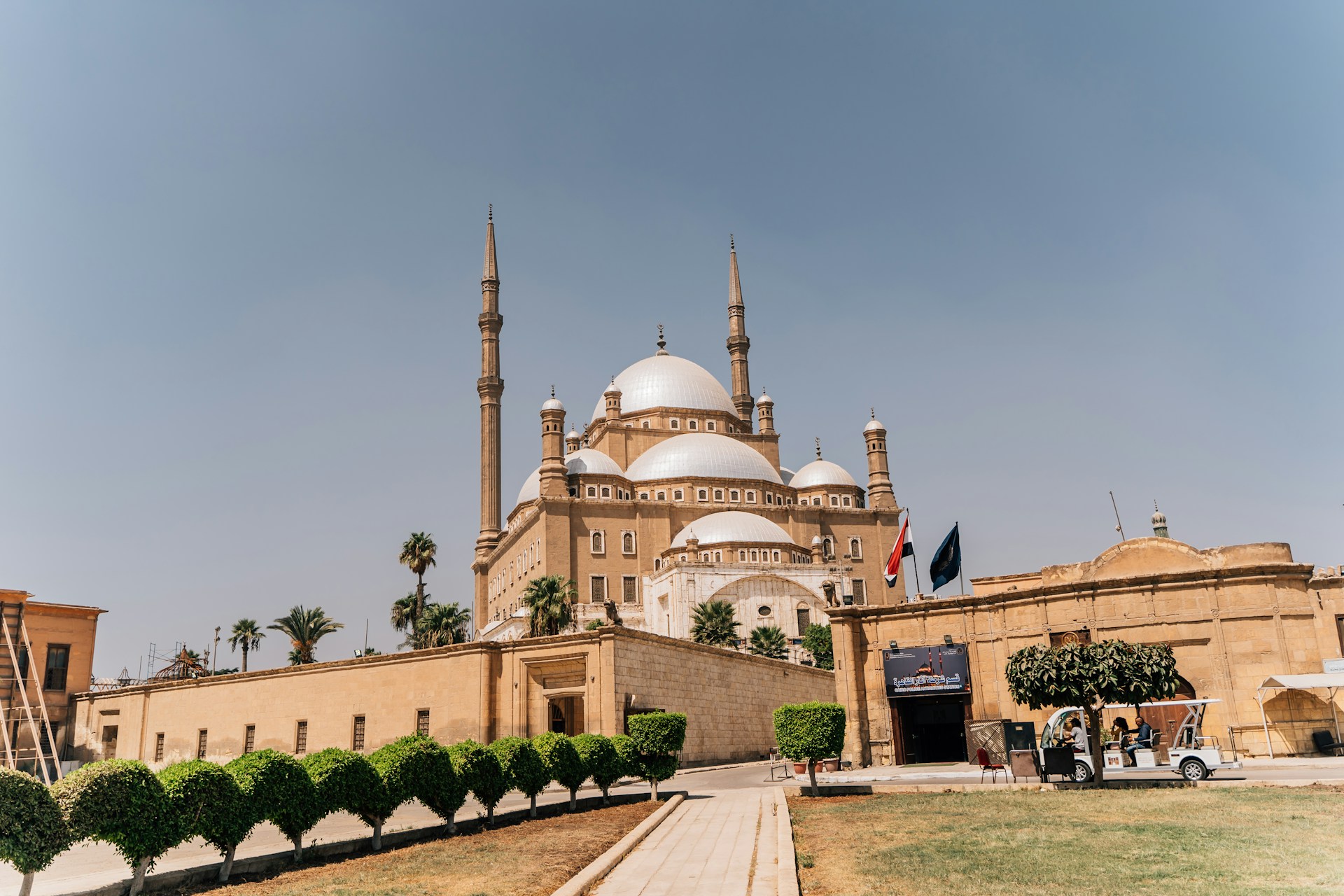The Citadel of Salah El-Din stands as a monumental embodiment of Egypt's historical resilience and architectural grandeur. Its towering structures, rich history, and panoramic views offer an unparalleled glimpse into the nation's past.


Post Introduction
The Citadel of Salah El-Din stands as a monumental embodiment of Egypt's historical resilience and architectural grandeur. Its towering structures, rich history, and panoramic views offer an unparalleled glimpse into the nation's past.
Post Content
Perched atop Cairo's Mokattam Hills, the Citadel of Salah El-Din stands as a monumental testament to Egypt's rich tapestry of history and architecture. Commissioned by the illustrious Sultan Salah al-Din al-Ayyubi in 1176 CE, this formidable fortress was conceived as a bulwark against Crusader invasions, drawing inspiration from the fortified citadels of Damascus and Aleppo.
Strategically positioned, the Citadel offers panoramic vistas of Cairo, underscoring its historical role as both a military stronghold and a symbol of sovereign authority. For nearly seven centuries, it served as the epicenter of Egyptian governance, witnessing the ebb and flow of dynasties, from the Ayyubids to the Ottomans.
Today, the Citadel is not merely a relic of the past but a vibrant cultural hub, housing an array of mosques, museums, and historical edifices that narrate the chronicles of Egypt's illustrious past. Its enduring legacy continues to captivate historians, architects, and travelers alike, making it an indispensable landmark in the heart of Cairo.
Dominating the Citadel's skyline, the Mosque of Muhammad Ali, also known as the Alabaster Mosque, epitomizes Ottoman architectural elegance. Constructed between 1830 and 1848 under the aegis of Muhammad Ali Pasha, this mosque features a spacious courtyard, towering minarets, and a central dome that soars above the city. Its interior, adorned with intricate carvings and chandeliers, reflects the opulence of the era.
Built in 1318 by Sultan Al-Nasir Muhammad, this mosque served as the royal chapel for the Mamluk sultans. Its distinctive green dome and slender minaret showcase the architectural finesse of the Mamluk period. The mosque's interior, though modest, exudes a serene ambiance, offering a glimpse into the spiritual life of the medieval Islamic world.
Housed within the Citadel, the National Military Museum presents a comprehensive overview of Egypt's military history. Exhibits range from ancient weaponry and armor to detailed accounts of pivotal battles, providing visitors with an immersive experience into the nation's martial legacy.
This museum offers insights into the evolution of Egypt's law enforcement agencies. Through a collection of artifacts, photographs, and documents, it narrates the development of policing from ancient times to the modern era, highlighting the role of security forces in maintaining societal order.
Q1: What is the historical significance of the Citadel of Salah El-Din?
The Citadel served as Egypt's seat of power for nearly 700 years, witnessing the reign of various dynasties and playing a pivotal role in the nation's political and military history.
Q2: Who was Salah El-Din, and why did he build the Citadel?
Salah El-Din, also known as Saladin, was a prominent Muslim leader who built the Citadel in the 12th century to fortify Cairo against Crusader attacks.
Q3: Are there guided tours available at the Citadel?
Yes, guided tours are available, offering in-depth insights into the Citadel's history, architecture, and significance.
Q4: What are the main attractions within the Citadel?
Key attractions include the Mosque of Muhammad Ali, Al-Nasir Muhammad Mosque, the National Military Museum, and the Police Museum.
Q5: Is the Citadel accessible to individuals with mobility challenges?
While some areas may be challenging due to uneven terrain, efforts have been made to improve accessibility, including ramps and designated pathways.